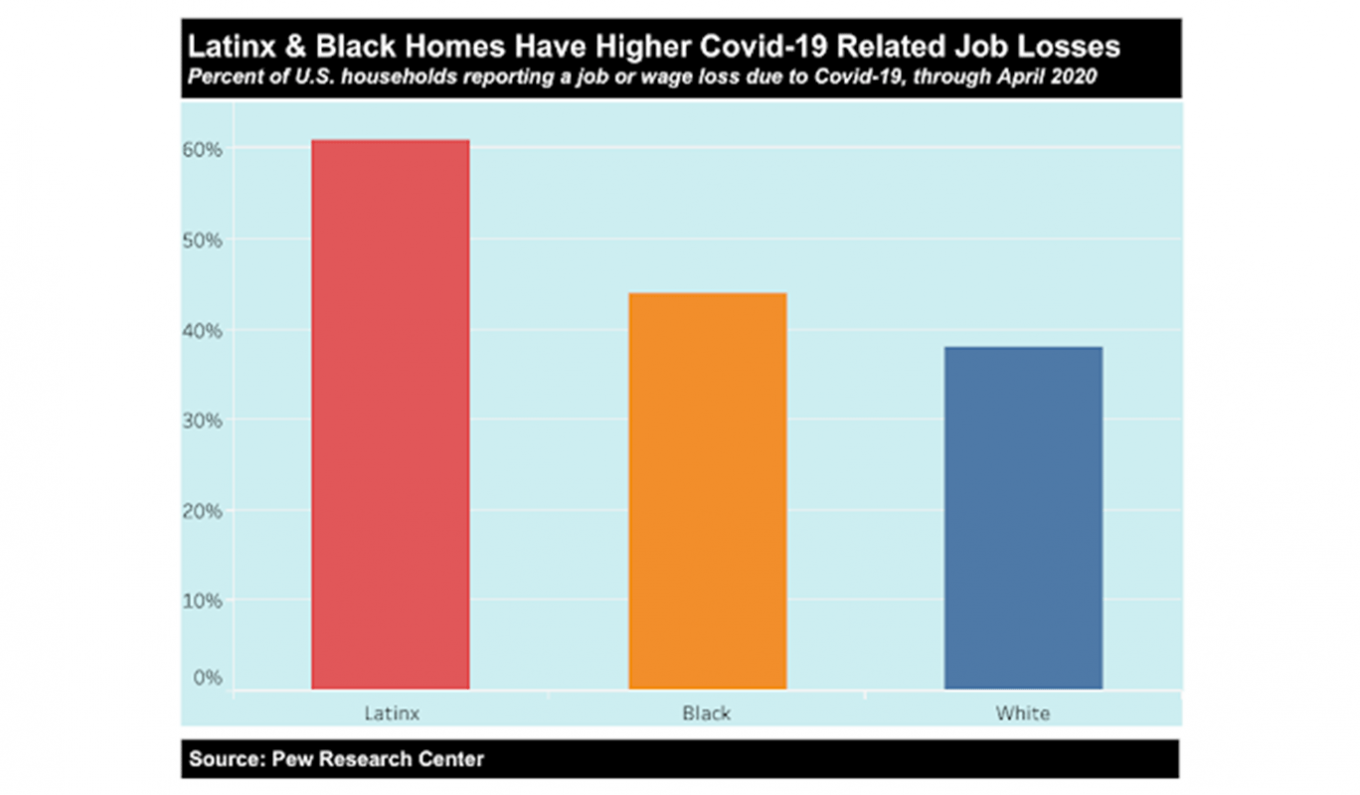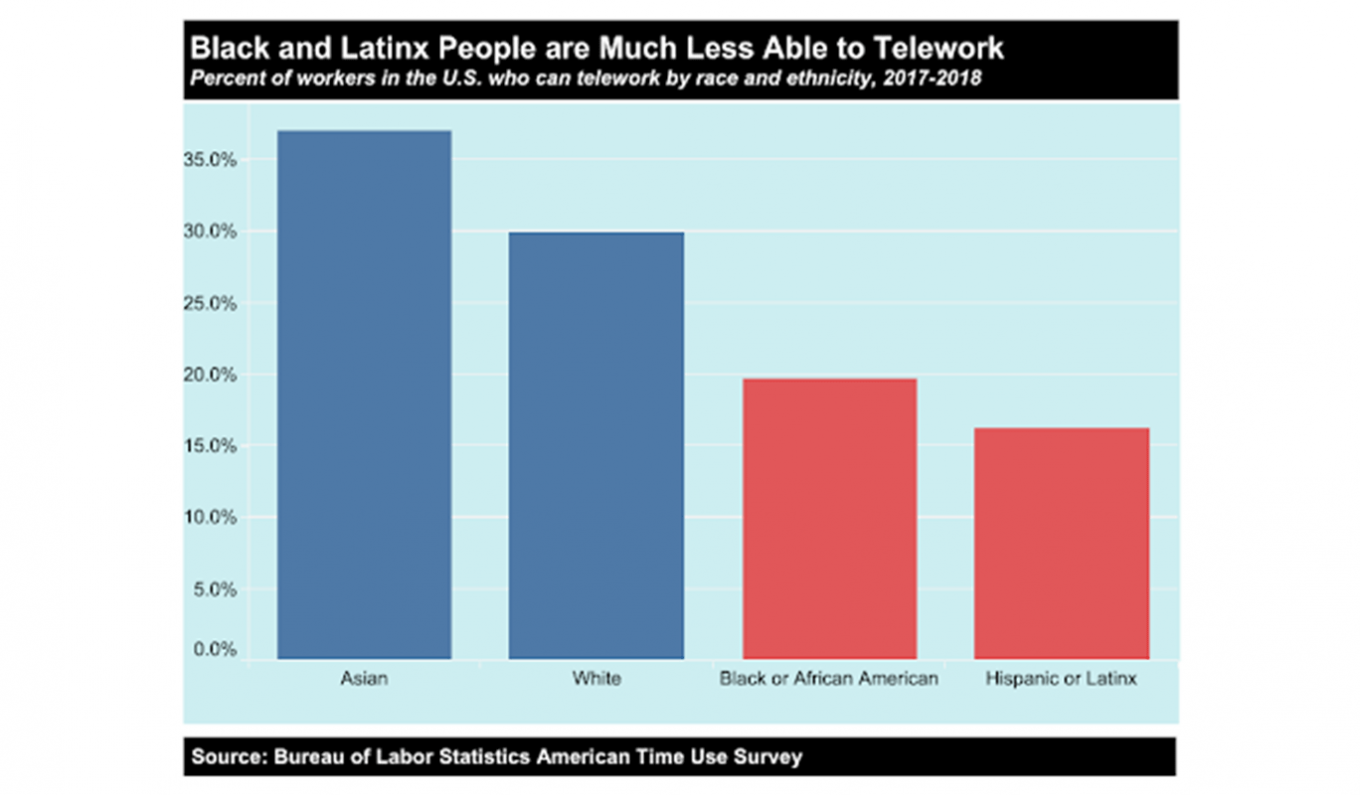
National COVID-19-Related Racial Inequality and The Workplace
2020 has been an unprecedented year in human history. The COVID-19 pandemic has had a catastrophic impact across the globe. While the entire country feels the severity of the pandemic, the nation's minority groups have endured the greatest devastation for both COVID-19 case rates and its economic impact.
In the midst of the pandemic, Americans took to the streets to protest systemic inequality and police brutality towards people of color. This initiated a powerful social movement across the United States focused on police reform and actions to address racial injustice. The pandemic, coupled with rising social tensions, has prompted an urgency for change, especially in the workplace.
Part of what has incited action during the pandemic is the undeniable evidence of an elevated level of racial infection and hospitalization rates from COVID-19, especially for American Indian, Alaska Native, Black and Hispanic populations.*

According to a Pew Research Center study, Latinx and Black individuals have suffered significantly higher job loss during the pandemic as compared to Whites.*

According to the same study, increased pandemic-related economic burden faced by minority groups may be attributed to more limited access to jobs that can be performed remotely.*

The data in this study supports the assertion that minorities have been affected by COVID-19 infection and pandemic-related job loss substantially more than Caucasians. Further, job loss and wage reduction are impacting minorities about one and a half times the rate for Caucasians. Additionally, the Centers for Disease Control and Prevention (CDC) reports that pandemic-related hospitalizations from COVID-19 in the United States are more than three times more likely for American Indian, Alaskan Native, Latinx and Black individuals.
Why Is This So Important now?
Prior to the impact of the pandemic, the Economic Policy Institute’s analysis of the Bureau of Labor Statistics’ Local Area Unemployment Statistics (LAUS) data and Current Population Survey indicated a discrepancy in unemployment rates between the major racial groups in the United States. In the nation’s last fiscal quarter before COVID-19, Black workers had the highest national unemployment rate at 5.7%. This percentage is followed by Latinx workers (at 4.1%) and Caucasian workers (at 3.0%).
Thus, the data shows that COVID-19 exacerbated the preexisting economic imbalance as represented by unemployment rates.
What Can Workplaces Do?
Considering people of all races, especially those of color, are in such a critical time, the onus for action to best improve our circumstances is on us. When realizing how much progress we can make, it is evident this is an exceedingly rare opportunity to collectively improve the lives of employees and the way people of color are treated in the workplace. There are a few specific ways that we can strive to do this.
- Creating a safe space for challenging discussions:A study from New York's Center for Talent Innovation indicated that 38%. of Black professionals felt it was inappropriate to speak about their personal experiences of bias in their workplace. By creating a safe and comfortable environment and providing the opportunity to express experiences or concerns, managers and HR representatives can improve communication and transparency.
- Improve awareness of inherent bias:By making all employees aware of the existence of national inequality and bias, we can support minorities across the nation and reduce bias in the workplace. For example, Cornell University requires a three-hour diversity training and awareness seminar as part of orientation. This experience promotes consciousness of the many inequalities minorities face and how to help combat bias with awareness and sensitivity.
- Know your rights: One of the most important legal rights about inequality in the workplace is Title VII of the Civil Rights Act. This law prohibits any type of discrimination in the workplace based on race, color, religion, sex and national origin. Any type of discrimination employees experience on this basis can be reported to an HR representative to be properly addressed.
- Level the playing field:Managers can help bridge the gap of inequality by creating programs such as minority executive training programs and support groups in the workplace. One way to begin accomplishing this is by implementing a system known as “ bias interrupters.” The concept of bias interrupters was created by Joan Williams, founding director of the Center for WorkLife Law at the University of California. It works by modifying existing business frameworks, such as hiring practices, performance evaluations, work assignments, promotions and fiscal decisions. These modifications will aim to directly address implicit bias in the workplace.
*Source For all Graphs: https://inequality.org/facts/racial-inequality/#racial-inequality-covid